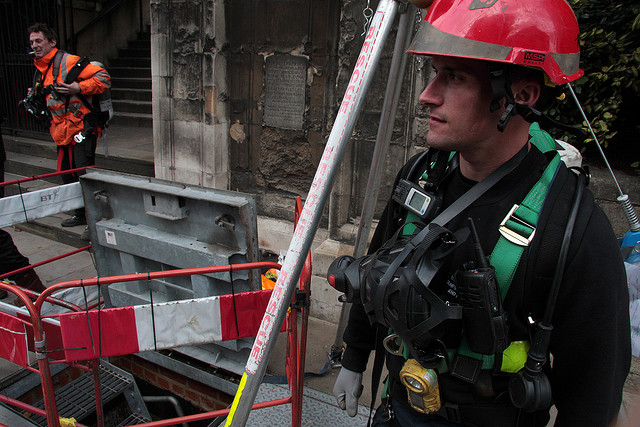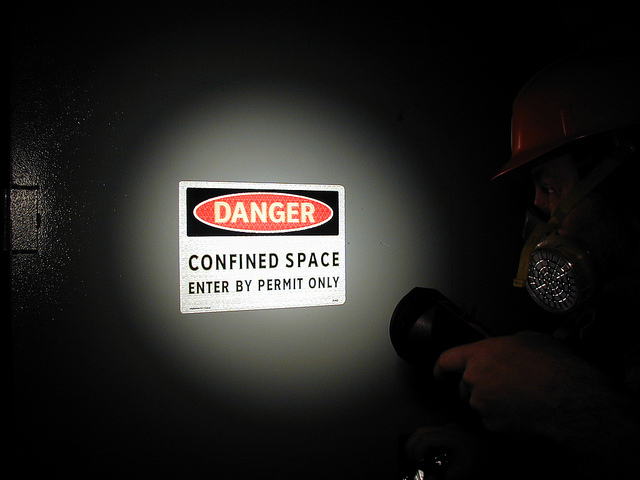3 Signs Safety Software Might Be The Solution For You
Safety software is a relatively new solution to an old problem. Have you ever thought to yourself, there has got to be a better way to stay complaint with safety regulations? Do you ever get frustrated that you have to fill out so many assessments and statements on paper. Do you find yourself missing things in your assessments because you are worried that it’s not in the right format?
These are just some of the frustrations that come with the process of staying compliant with safety regulations. It can have significant effects on your safety culture if you find the process of safety too difficult. If you have ever ran into any of the above, it might be time to consider finding a solution before it becomes too much of a headache that safety goes out the window and all your effort is spent just to be compliant.
In this article we will cover in depth 3 signs that it might be time to consider utilizing safety software before your safety is ignored for compliance.
You’re worried about compliance incase of an incident
Running a business is no easy task. It’s like juggling 10 things at once. When things are going well, it’s a great feeling. But it only takes one slip up or incident to cause everything to come crumbling down. The stress and anxiety of a WHS incident happening in your business is enough to keep anyone up at night. On top of that, if you know you might get slapped with a fine after the incident you’ll always be stressed or worse, you’ll delay reporting an incident. This can lead to huge fines and even jail time. No one wants that.
Safety compliance in the modern day is no simple task. There are a lot of regulations and legislation that you must adhere to in your day to day business. This can become quite a headache and adds to the stress of making sure you have ticked all the boxes. Or worse, leads you to ignoring your requirements and hoping that an incident doesn’t occur. As we have covered in a previous article, incidents happen to even the best of employers who are proactive with safety, its simply the reality of probability. If there is a chance, eventually it will happen.
Ask yourself this. If there was an incident at your workplace tomorrow and it lead to an inspection, would you be confident you would pass? Have you got a solid and refined risk assessment process in place to identify, assess and control risks in your workplace?
If the answer is not a confident yes then it might be time to look at solutions. Safety software like our platform SafeWorkPro allows you to focus on your process more while making the document compliance side of things a worry of the past. While SafeWorkPro won’t solve all of your safety worries, it will help you be more effective with your time so you can spend less time filling out forms and more time focusing on the actions that lead to a safer workplace. We have talked about how your process is more important than your documents in a previous article. In the eyes of the law, the concern is about what you actually do to keep people safe.
If you want to spend more time on safety and less time on the books, then safety software might be the solution for you.
Safety software makes documentation simple and easy
How long does it take you to complete a risk assessment from start to finish? What about a SWMS? Do you find it difficult to complete documents because of all the back and forth that is required between the site, office and in between your workers? If your documentation process is top notch and you have no issues with filling out lengthy paper documents then this might not apply to you. But for those that get frustrated with how much time away from work they have to take to complete documents, this one might be for you.
When the bottle neck for starting a job is the paperwork you need to complete for safety compliance it can become frustrating. It can sometimes feel like too much time is being wasted on paperwork when you could be working. This can lead to rushing through it which defeats its purpose. It also means that you are more likely to skip the processes that really matter to keep people safe.
If you are on a site that needs a SWMS and something changes that requires you to re-evaluate your SWMS, the process starts again and the tools are down until it is done. With safety software, the process of completing documentation is significantly easier. In principle, it is the same but in practice you’re saving time that would otherwise be spent filling a document and running around to get it signed. SafeWorkPro’s simple form based builder allows you to build custom documents which are super simple for your workers to complete on site when needed.
Save the hassle of the back and forth trying to get your documents read and signed by those on site. Have workers fill and sign documents from anywhere on site and have them submitted to the cloud for you to review from any location. SafeWorkPro even lets you get notifications when certain actions happen like a risk rating on a risk assessment matrix being too high or an incident is submitted. SafeWorkPro can help you save time on compliance and let’s you focus on what you do best.
Safety software helps you find old documents quick
Ask yourself this, can you find your risk assessment or SWMS from a job 2 years ago? If you were audited, could you produce it? This is something that isn’t obvious until it is an issue and by then it’s too late. How much of an impact on your day to day operations would a surprise audit have? Would you need to go digging through the back office folders to find the documents required? What a headache!
Even while you are on site, your documents like a SWMS need to be available for everyone to see. While they are there, they are likely to get damaged or degraded by weather. Sometimes, by the time they get stored for safe keeping they are almost falling apart.
With the safety of cloud document storage, SafeWorkPro can store all of your important documents online forever. With all of your documents in one place and neatly organized it’s super simple to find the documents you need, even if they are from years ago. Our software also makes audits quick and easy with next to no disruption in your operations. Export all of the data from your SafeWorkPro site for review without having to spend hours digging through folders, photocopying and physically delivering documents.
Conclusion
If any part of this article resonates with you, it might be time to consider trying out a better solution to using a manual safety process. Beyond just the convenience, SafeWorkPro can help you focus your time on the actions that truly make people safe, not just the actions that make you compliant. At the end of the day, that is what you will be judged on if you have an audit or investigation. Documentation is required of course, but that is simple the surface level when it comes to safety.
If you want to learn more about how SafeWorkPro could help you in simplifying your WHS, reach out to our friendly expert staff for a free, no obligation live demo.
Hazard Assessment in Confined Spaces
In the previous article ‘Working in Confined Spaces Risk Assessment’, we looked at the definition of ‘confined space’ and what generic risks and hazards are associated with it. It is clear that confined spaces fall under the mandate of what constitutes high risk construction work. Based on the Work Health and Safety Regulation 2011, Safe Work Australia outlines many of the considerable hazards involving with working in confined spaces but there substantial details to each of these that should be noted.

o Presence of harmful airborne contaminants
o Unsafe oxygen level caused when oxygen in the atmosphere is:
- displaced by gases produced during biological processes, for example, methane in a sewer
- displaced during purging of a confined space with an inert gas to remove flammable or toxic fumes
- depleted inside metal tanks and vessels through surface oxidation (for example, when rust forms)
- consumed during combustion of flammable substances
- absorbed or reacts with grains, wood chips, soil or chemicals in sealed silos.
- reacts with chemicals that increase risk of explosion or fire (eg hydrogen peroxide)
- leaks from oxygen tank or fitting during use of oxy-acetylene equipment
o Fire and explosion
- Flammable gas, mist or vapour in atmosphere exceeds 5% of its lower explosive limit (LEL)
- Evaporation of flammable residue
- Use of flammable materials
- Chemical reaction (eg build up methane from sewer)
- Presence of combustible dust (flour in silo)
o Introduction of an ignition source into atmosphere. Such sources may include:
- open flames and hot surfaces
- electrical equipment
- internal combustion engines
- metal tools striking metal surfaces
- spark-producing equipment for example grinding wheels
- static electricity
o Engulfment leading to asphyxiation
- Confined spaces with stored materials including plastics, sand, liquids, fertiliser, grain, coal, coal products, fly ash, animal feed and sewage
o Uncontrolled introduction of substances
- Substances include steam, water or other liquids, gases or solids that may result in a person drowning, being overcome by fumes or other harm
- Build up of exhaust fumes, including carbon monoxide, from nearby vehicles including LPG forklifts
o Contact with biological agents
- Such as micro-organism like virus, bacteria or fungi which can cause infectious diseases, dermatitis or lung conditions such as hypersensitivity pneumonitis
- Sewers, grain silos and manure pits are confined spaces where biological hazards may be present

o Exposure to mechanical hazards
- The entanglement, crushing, cutting, piercing or shearing of parts of a person’s body from mechanical hazards including augers, agitators, blenders, mixers and stirrers
o Contact with electrical hazards
- Electrocution, shocks or burns caused by cables, transformers, capacitors, relays, exposed terminals and wet surfaces where electrical circuit and electrically powered plant are used
o Skin contact with hazardous substances
- Increased likelihood of skin contact with contaminated surfaces resulting in burns, irritation, allergic dermatitis or long-term systematic effects
o Noise
- Noise caused by plant, work method or process may be amplified due to noise reflections off hard surfaces
o Manual tasks
- Physical restraints of confined space may exacerbate hazards relating to manual tasks
- Further hazards may arise from use of PPE that restricts movement, grip and mobility
o Radiation
- Sources of radiation may include x-rays, lasers, welding flash, radio frequency and microwaves
o Environmental hazards
- Factors that contribute or cause harm such as heat or cold stress, inadequate lighting
- Slips, trips and falls
o Control methods for hazards near or adjacent to a confined space (pg 19)
- Hazards outside the confined space: ie vertical opening = risk of falling in space
- Traffic hazards should the confined space be located under or near a road
- Exhaust gas from a adjacent vehicle or machine may contaminate the confined area
- Confined areas adjacent to work involving flammable substances
Risk assessment for chemicals checklist
When working with hazardous substances or chemicals, it is especially important to effectively complete risk assessments. One way to help in this area is to complete a risk assessment checklist before beginning any high risk construction work.
A hazardous substances risk assessment is a useful component of safe operating procedures but risk assessment checklists are a great way to double check any workplace precautions. This is beneficial due to the increased risks in construction presented by the potential long-term health effects of exposure to hazardous substances.
The below is a risk management checklist based on the codes of practices for managing risks of hazardous chemicals.
1: Does a risk assessment need to be carried out?
2: Has it been decided who will carry out the risk assessment?
3a: Have all the hazardous chemicals in the workplace been identified?
3b: Has a hazardous chemical register been produced?
· A register is a list of hazardous substances, accompanied by a safety data sheet, and easily accessed by all duty holders
4: Has information about the hazardous chemical been identified?
5a: Have other previous relevant records, including risk assessments, been checked?
· If yes: have any specific hazardous substances been assessed as high risk?
6: Does the hazardous substance have any health hazards?
7: Does the hazardous substance have any physicochemical hazards?
8: Does the hazardous substance have an exposure stands?
· Refer to Workplace Exposure Standards for Airborne Contaminants
9: Do workers involved in the work related to hazardous substances require health monitoring?
· Refer to Part 7.1, Div. 6 and Schedule 14 of the WHS Regulation 2011
10: Is there a potential for workers to be exposed to hazardous substances at the workplace including by-products and waste?
· Consider these questions:
o Is the substance released into the work area’s atmosphere?
o Are people located in the immediate vicinity?
o How long are workers exposed for?
o Are there risks involved in the storage and/or transportation of the hazardous substance?
11: Are the controls measures specified in the risk assessment effective in controlling hazards and reviewed regularly?
12: Are risks not significant, significant but adequately controlled, significant but not adequately controlled or uncertain?
13: Have any actionable safety procedures been conducted as a result of question 12?
14: Has the risk assessment been recorded for future reference?





